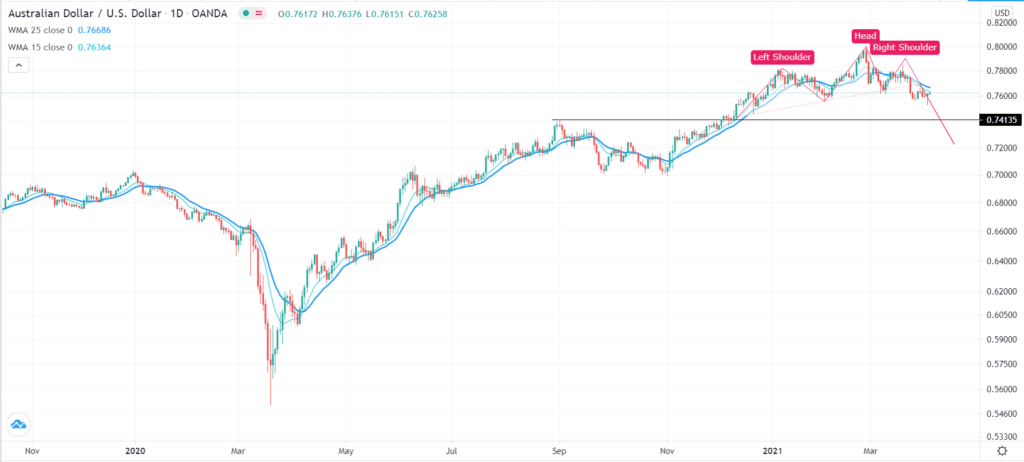The Australian dollar has risen for the past two consecutive days as investors price in a stronger recovery of the global economy. The AUD/USD has risen to 0.7628, which is slightly above this week’s low of 0.7535. The GBP/AUD and EUR/AUD have also declined, albeit slightly.
Strong global recovery
Australia is a key supplier of vital commodities. It is a leading supplier of coal, iron ore, and other commodities that are used globally. Therefore, the country’s economy does well when the rest of the world is recovering.
There are signs that the global economy is recovering faster than expected. Data released by Markit and JP Morgan revealed that the global manufacturing PMI rallied to 55.0 in March, the highest level in 121 months. This happened as demand for manufactured goods and the manufacturers boosted their output.
In most countries, the manufacturing PMI rose above 50. In Australia, data by both the Australian Industry Group (AIG) and Markit showed that the PMI was above 50. Similarly, the PMI in countries like the United States, Germany, Japan, and China, also rose.
The trend could accelerate as more countries boost their vaccination process. Indeed, countries like Israel, the United States, and the United Kingdom have vaccinated millions of people. And analysts expect that these countries will reopen in the near term.
Further, this week, Joe Biden unveiled a major infrastructure proposal that will now be debated in Congress. The plan calls for spending billions of dollars fixing the country’s roads and bridges, research and development, and broadband access.
It will also include green housing and measures to reduce carbon output. Australia will be an indirect beneficiary of this since the US imports a substantial amount of items from China. The country sells most of its commodities to China.
RBA decision ahead
On Friday, the AUD/USD price will react to the latest US non-farm payroll numbers. Economists polled by Reuters expect the data to show that the economy added more than 500,000 jobs after it added 465,000 in March.
The strong recovery is mostly because many states have started to reopen as the government ramps up the vaccination efforts. Further, wages are expected to hold steady while the unemployment rate is expected to move below 6.0%.
The pair is also rising as US bond yields declined. The 10-year Treasury yield declined to 1.64% from the weekly high of 1.76% while the longer-term 30-year yield has declined to 2.23%.
Meanwhile, investors are looking ahead to the important Reserve Bank of Australia (RBA) meeting that will come out on Tuesday last week. As it has done before, the bank is expected to maintain interest rates where they have been since the pandemic started. Also, the bank will commit to leaving the quantitative easing plan intact. Still, analysts will be watching for the forward guidance from the bank.
AUD/USD technical forecast

The AUD/USD has risen slightly in the past two days. On the daily chart, the pair has also formed a head and shoulders pattern, which is usually a bearish sign. The pair has also moved below the 25-day and 15-day moving averages, while the price is slightly above the important support level at 0.7413, which was the highest level on September 1 last year. Therefore, despite the jump, the pair may resume the downward trend as bears target the support at 0.7400.







